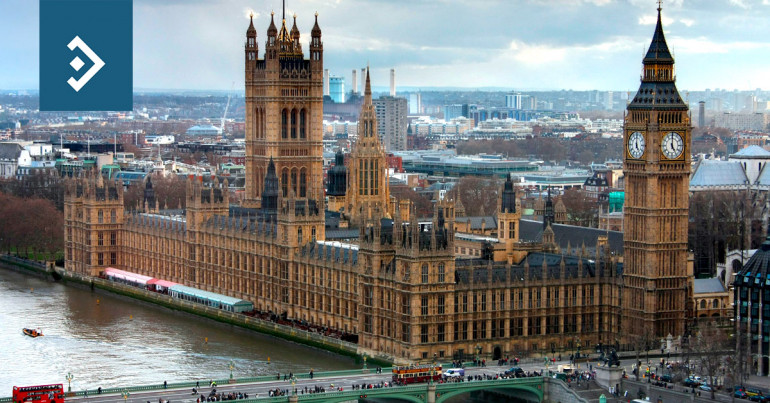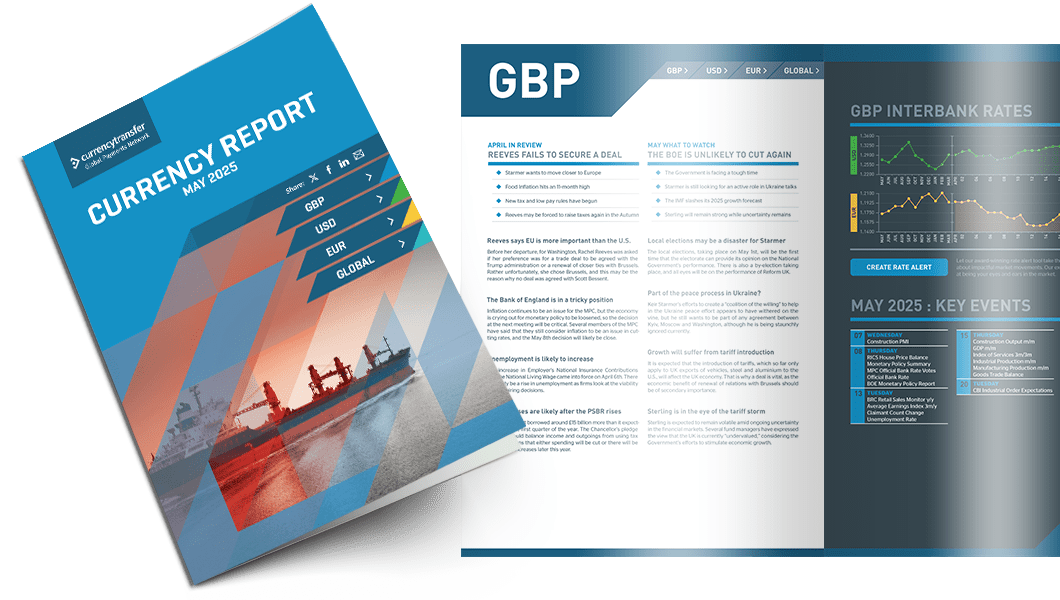
Highlights
- Is Farage the real leader of the opposition?
- It’s a big week for monetary policy
- The ECB has been too conservative in cutting rates – Economists
Economic missteps are continuing
Rishi Sunak did not need to call the election when he did, but given the opinion polls at the time, there would have been no suitable time between July and the November deadline to call the election.
The Conservative Party’s time in power had simply come to an end.
Nigel Farage was interviewed on TV yesterday, and it was clear that he is taking full advantage of the fact that Reform UK has something of a clean slate, not having had any part in the numerous events that the two main parties have dealt with so poorly over the past fifteen or twenty years.
Farage talks a very good game and has some powerful supporters.
However, it emerged overnight that Elon Musk appears to have dropped his support for the Reform leader. He is quoted in several newspapers as saying that he “doesn’t have what it takes” to lead the party and that Reform needs a new leader.
Farage’s response to this setback will be significant given the support his Party is currently seeing, making him the opposition leader in all but name.
The political climate in the UK is currently embroiled in significant economic debates, particularly concerning taxation policies and the ramifications of Brexit.
Taxes need to rise in the short term while whatever shortfall Rachel Reeves found in the country’s finances is patched. It is unwise of her to have stuck so clearly to her message that tax wouldn’t rise to then find a backdoor to increase employer’s national insurance contributions, which at the end of the day would always rebound on the ordinary taxpayer.
The economy is going to take a considerable time to exhibit a level of growth that will make people sufficiently confident to begin spending again. Consumers are a significant growth engine for the economy and until their confidence and spending intentions are considerably improved not only will the economy struggle but the entire atmosphere around Government action, whether that is building new homes, cutting NHS waiting lists or immigration will be treated with scepticism.
The pound has started the new year on the back foot, falling against both the dollar and the euro.
Versus the Greenback, it fell to its lowest level for eight months, reaching a low of 1.2325 and closing at 1,.2426. While against the single currency, it reached 1.2011 and closed at 1.,2058.
Market volatility is going to lead to more unpredictability since G7 central banks are likely to be even more data-driven during the first quarter of 2025.

Read our latest currency report
Most impactful events planned this month and how they could impact your business
A year of moderate employment growth comes to an end
However, two Fed policymakers finally broke their silence over the weekend to make their views on monetary policy clear.
Fed Governor Adriana Kugler and San Francisco Fed President Mary Daly spoke at a conference on Saturday, and surprisingly, both spoke of their opinion that their job in taming inflation is not yet done.
Their remarks highlight the delicate balancing act facing U.S. central bankers this year as they look to slow their pace of rate cutting. The Fed lowered short-term rates by a full percentage point last year, to a current range of 4.25%-4.50%.
Inflation by the Fed’s preferred measure is well down from its mid-2022 peak of around 7%, registering 2.4% in November. Still, that’s above the Fed’s 2% goal, and in December policymakers projected slower progress toward that goal than they had earlier anticipated even as they agreed to a further rate cut.
Jerome Powell spread a little confusion in the market, announcing a “hawkish cut” in interest rates. Such a move is more usually associated with the end of a cycle of rate cuts, but Powell went on to say that there will be further cuts, but not with the regularity that they were seen over the final quarter of 2024.
In November, unemployment was 4.2%, consistent in both Kugler and Daly’s view with maximum employment, the Fed’s second goal alongside its price stability goal.
“At this point, I would not want to see further slowing in the labour market, maybe gradually moving around in bumps and chunks in a given month, but certainly not additional slowing,” said Daly.
This week, the minutes of the Dec.18 meeting will be published, and they will be more eagerly anticipated than usual given the likely disagreement over the rate cut that was eventually agreed upon.
On Friday, the December employment report will be released, bringing to an end a period of moderate employment growth.
The early consensus is for December non-farm payrolls to have risen 153k with a range of 125k to 200k, but expectations will be firmed up through the week with the release of job openings numbers, ADP private payrolls and the ISM employment components.
Jobless claims fell unexpectedly from 220k to 211k in the week ending December 27th which is also a positive for the December payrolls data.
The dollar is still very well-supported by several factors, primarily the expected diversification of monetary policy between the U.S. and Europe.
With Trump’s inauguration now just two weeks away, it is unlikely that the dollar will lose any of its inherent strength during the intervening period.
Last week, the dollar index rose to a high of 109.56 and closed at 108.96 as market enthusiasm over Trump’s economic policies drove it close to its medium target of 110.
Protectionism will promote massive changes in trade
It was reported recently by IFO, the German economic institute, that there are nascent moves in Italy, driven by the banking crisis that exists there, to take Italy out of the Eurozone and eventually out of the EU entirely.
The Government of Giorgia Meloni is distancing itself from any discussion about Italy’s role in Europe, although she has cosied up to Donald Trump, in a recent meeting held at Mar-a-Lago, Trump’s Florida Property.
Meloni may well find herself more politically aligned with Trump than several of her European counterparts.
Given the issues being faced by Germany and France currently, the focus will fall on Italy as the EU’s next largest economy to show some much-needed stability.
Members of Meloni’s right-wing Brothers of Italy party have hoped that the two leaders’ ideological affinity will help her emerge as one of Trump’s primary European partners. The president-elect has expressed enthusiasm for the Italian leader, whom he also met last month in Paris during the reopening of the Notre-Dame Cathedral.
As Europe continues to shift to the right, Italy, Hungary, and the Netherlands will likely be considered “friendly” EU members as Trump tries to forge better relations than he had during his first term in office.
Trade is still the most contentious issue between the U.S. and Europe, with no one fully aware of Trump’s intentions regarding the addition of tariffs to imports from Europe.
Consumer prices, due for release this week, probably rose 2.4% in December from a year earlier, up slightly from the previous month’s result. The core rate that strips out energy and other volatile items probably stayed at 2.7%, according to economists.
Such an outcome, stoked by fuel costs, will underscore the challenge still faced by European Central Bank President Christine Lagarde and her colleagues at the dawn of a new year. She heralded January with remarks expressing her hope that inflation will reach the goal in 2025.
The ECB’s projections show the fourth quarter as the moment when 2% may be achieved. Resurgent gas prices in recent days are just one of the elements of a shifting backdrop that could endanger that outlook, while threatened US trade tariffs might further cloud the horizon.
In the past week, Bank of Greece Governor Yannis Stournaras predicted that the ECB will have cut 100 basis points off its deposit rate by the fall of 2025. Economists and investors see a similar path for borrowing costs.
By contrast, Stournas’ Austrian colleague, Robert Holzmann, said that policymakers could consider waiting before delivering their next cut.
“Some energy prices are trending upwards again,” he told an Austrian newspaper. “But there are other scenarios for how inflation could return, such as a stronger depreciation of the euro.”
Last week, the euro suffered at the hands of a strengthening dollar. It fell to a low of 1.0224 and closed at 1.0305.
Have a great day!

Exchange rate movements:
03 Jan - 06 Jan 2025
Click on a currency pair to set up a rate alert
Alan Hill
Alan has been involved in the FX market for more than 25 years and brings a wealth of experience to his content. His knowledge has been gained while trading through some of the most volatile periods of recent history. His commentary relies on an understanding of past events and how they will affect future market performance.